
A Naughty Dog Retrospective
Early Years
1984, two teenagers — Jason Rubin and Andy Gavin — and a shared passion for computing. That’s the formula for JAM Studios (Jason and Andy’s Magic Studios), as well as the start of this underDOG story. Throughout the eighties, the pair created games like Math Jam (1985), Ski Crazed (1986) and Dream Zone (1987) for home computers, learning the art of game-making as they went. Just before the eighties came to a close, JAM Studios opted for a name change. They wanted something with a bit more… bite, and what bites more than a Naughty Dog?

Meet Naughty Dog's first -terrifying- mascot
With a new studio name and sharpened programming skills, the duo left the eighties and PC gaming behind with Keef the Thief (1989) and entered the nineties with Isometric RPG Rings of Power (1991) for the Sega Mega Drive/Genesis. Jason and Andy were becoming pretty good at this whole ‘game design’ thing, and they were starting to attract the right kind of attention. Way of the Warrior (1994), a 2D motion-captured fighting game for the 3DO, was picked up and published by Universal Interactive Studios. In fact, Universal saw so much promise in the young men, that they signed Naughty Dog on for three more titles following Way of the Warrior. Any guesses what those three titles might have been?
“Sonic’s Ass Game”
Following the release of Way of the Warrior, work began on what would eventually become Crash Bandicoot (1996). Jason and Andy had graduated from their basement dwellings of the eighties and piled into a car headed straight to California, where they’d start working under the umbrella of Universal Interactive Studios. 3D gaming was the latest trend, and the pair were convinced by Mark Cerny of Universal to take on the platformer genre from the 3rd dimension. They settled on a behind-the-back camera perspective for their platformer which — incidentally —focused on the character’s rear, thus the codename “Sonic’s ass game”.
Two men were not going to pull this project off alone: They were ambitious, but thankfully not stupid. The development of Crash Bandicoot (initially Willie the Wombat) prompted the hiring of Naughty Dog’s first employees, and marked the next step in Naughty Dog’s maturation into a real-deal, world renowned studio. Some way into development, Sony agreed to publish the title in conjunction with Universal for the original PlayStation console. Sony was a fresh-face on the console market and needed a mascot to face up to the likes of Mario and Sonic. At E3 1996, a certain fuzzy, orange, denim shorts-wearing marsupial made his public debut and caught the public's eye. Naughty Dog was about to release its first of many smash-hits for the PlayStation and make gaming history.
Crash Bandicoot hit store shelves in 1996 to lasting critical and financial success. It was the best-selling PlayStation game of its time, with an estimated 6.8 million units sold worldwide to this day. Players took an instant liking to the vibrant world, characters and all important 3D gameplay, while Sony took an instant liking to their financials and the fact that they had a respected mascot to legitimise their first steps into the gaming industry.
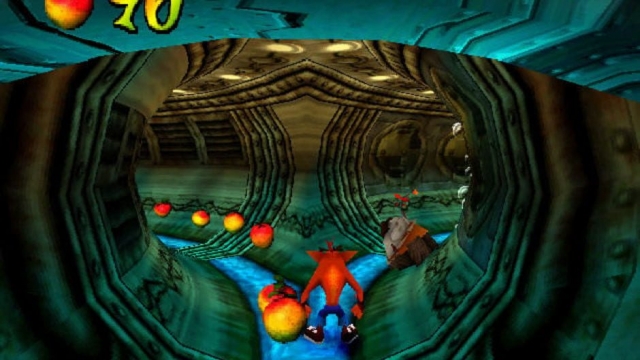
It should come as no surprise that everyone was clamouring for a sequel. Fans wanted more levels; Naughty Dog wanted to elaborate on ideas and make use of their improved understanding of the PlayStation hardware; and Sony really, really wanted more money. Crash Bandicoot 2: Cortex Strikes Back (1997) did everything you’d hope for in a gaming sequel. More varied levels, new gameplay mechanics, smoother animations, sharper graphics and a — slightly — more fleshed-out universe with new characters to meet. Some of the more frustrating sections that made the original Crash tough to finish were also addressed in the sequel, making this title an all-round more pleasant experience. Of course, it too sold fantastically and reviewed well too, meaning a third entry was inevitable.
Crash Bandicoot: Warped (1998), for the most part, played as a full-length expansion pack for the second title. Granted, there were some innovations in the form of vehicle sections with more open environments, but these were mostly agreed to be among the weakest parts of the game. Make no mistake, Warped was still a superb title that reviewed and sold well, — the level concepts it introduced are among my personal series favourites — but Naughty Dog was ready to branch out from the Crash formula, and it was starting to show.
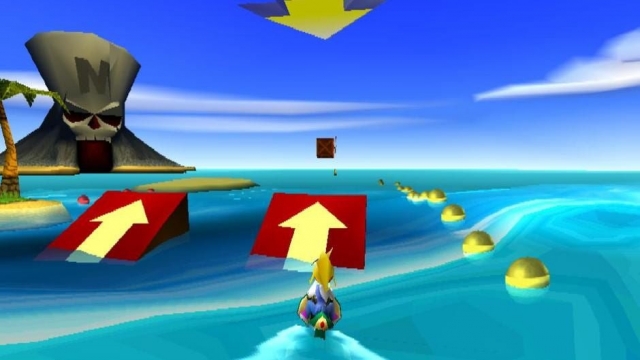
Naughty Dog was to make one more game in the Crash franchise before handing it off to Eurocom and then Traveller’s Tales: Crash Team Racing (CTR), an arcade racer that worked as a compromise between Naughty Dog and Sony. While the former still cherished the universe and characters of Crash Bandicoot, it didn’t want to make a fourth “Sonic’s Ass Game”. The latter, Sony, wanted a fourth game just like the previous three but settled for any title with the familiar, bankable characters. CTR was designed to satisfy both parties. As would be expected from a team who’d spent three years making 3D platforming stages, the game’s tracks were praised for their distinctiveness. In fact, CTR is looked back on as one of the best kart racers of all time that isn’t blessed with the presence of an Italian plumber and his cohorts.
So, with three classic platformers and a well-liked racer under its shared belt, Naughty Dog and Sony’s relationship was off to a strong start. Where next?
Dynamic Duo
In 2001, Sony and Naughty Dog’s five-year relationship reached the next level. The little two-man operation in that Virginia basement had flourished and grown into a fully-fledged studio, one that, following an acquisition by Sony, had gone first-party! With the firm support of Sony, the funding that comes from being a first-party developer and a newly-released console to work with, Naughty Dog was set to make the 2000s its best decade yet.
Jak and Daxter: The Precursor Legacy (2001) was ambitious as hell. Not only did it look good, but its use of the PlayStation 2’s hardware to create a seamless, open game world meant there were no loading screens to break up gameplay. This did wonders for aiding player immersion, and of course, it helped that the game itself was outstanding on top of being a technical marvel. Players leaped, smashed and flew through an intriguing new world with varied gameplay, likeable characters, and a real sense of humour — Naughty Dog was starting to come into its own as a truly well-rounded developer.
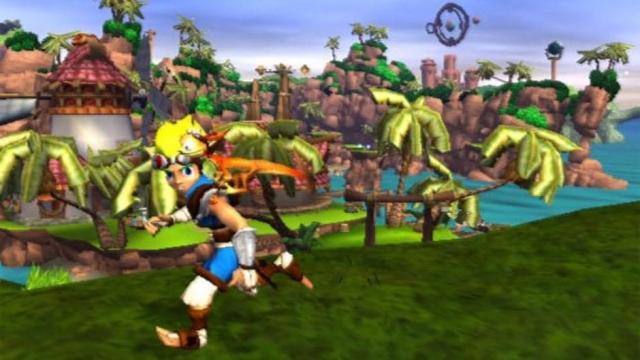
As if it needed saying at this point: The Precursor Legacy was another smash-hit all round, selling millions of copies worldwide and ensuring a sequel was all but certain. It would be a couple of years before Naughty Dog’s next entry however, in the meantime it had some serious growing-up to do.
The release of both Jak II: Renegade (2003) and Jak 3 (2004) marks a pivotal era in Naughty Dog’s maturation as a developer. The two titles go hand-in-hand because of how Jak 3 was largely iterative of Jak II, in the same way Crash: Warped built upon Cortex Strikes Back. With these next two PlayStation 2 releases, Naughty Dog ditched the familiar vibrant world and innocent tone; Jak II wasn’t a collect-a-thon platformer but a mission-based, open-world shooter with occasional platforming diversions — more Grand Theft Auto III, less Banjo Kazooie.
By ageing Jak and giving him a — rather grumpy — voice, Naughty Dog made it clear that it was ready to “grow up” and take us players along for the ride. Morally ambiguous characters, less family-friendly humour, violence and even car-jacking fill out the story and gameplay of Jak II and 3. The contrast in tone may have been jarring for fans of early Naughty Dog, but the games were still well-received, and the change of pace was necessary in order for the developer to grow with its audience and the industry. Plus, many of the features introduced in Jak II, particularly those involving characterisation and interaction, would be vital to the success of future franchises.
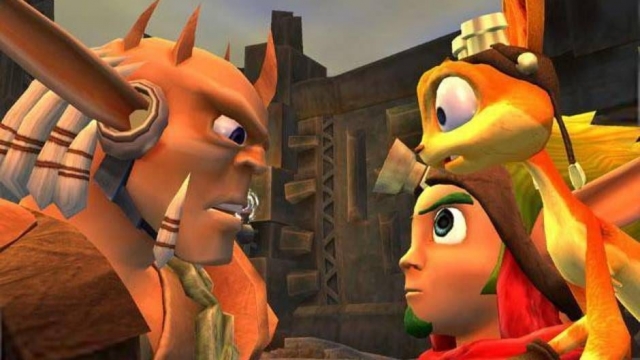
Once again, we see off Naughty Dog’s involvement in a franchise with an arcade racer! Jak X (2005) was a vehicular combat game that developed the driving mechanics of the previous two entries in the series. More than anything though, the game was released to buy Naughty Dog some breathing room to develop a fresh IP amidst internal and external shake-ups. Jason Rubin and Andy Gavin (remember those two?) were making their exits from the company, and a new pair — Evan Wells and Christian Balestra — were taking the reins. On top of that, the next generation of consoles was on the horizon, meaning that the acclaimed developer’s next release was to be on brand-new hardware…
In the “Big” Leagues
Work on Naughty Dog’s first PlayStation 3 title began as early as 2005. Initially codenamed “Big”, it would soon become known as Uncharted: Drake's Fortune (2007). Many of the creative visionaries behind Naughty Dog’s more recent titles started to have an influence here: Neil Druckmann, Josh Scher and Amy Hennig being three notable examples. These three were with Naughty Dog during the PlayStation 2 era — Hennig most significantly — but their true vision and passion for storytelling made itself apparent here.
Uncharted took what Jak II and 3 achieved with regard to characterisation, and pushed it a step further while creating a pulpy, larger-than-life action blockbuster. Players took control of wisecracking Nathan Drake on a heavily scripted, treasure hunting thrill-ride of a third-person shooter, chock-full of enough set-pieces and one-liners to make Michael Bay green with envy. At least... that was the aim, and upon release Drake’s Fortune genuinely succeeded in blowing critics away with its production values, charm and polish. Sadly, Drake’s first adventure hasn’t aged like a fine wine: the animations are a little too choppy, gameplay is noticeably clunky and it’s not quite polished enough to make a pleasant experience for today’s players. Still, the game’s characters and story never cease to be entertaining, even if the gameplay can’t hold up its end of the bargain.
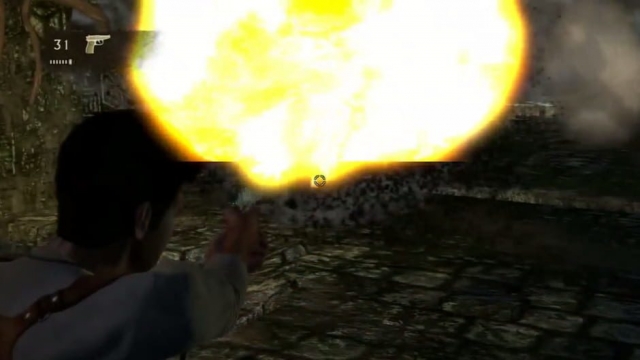
Where Crash 2 followed the “iterative game sequel rulebook” to a tee, Uncharted 2: Among Thieves (2009) rewrote the book entirely. It set a new gold standard for how much a game can improve from one entry to the next and sits alongside Half-Life 2 and A Link to the Past in the pantheon of all-time greatest gaming sequels. Nathan and his treasure hunting comrades were certainly entertaining in the first game, but the quality of writing and performances in Among Thieves meant that players had no choice but to open up their hearts and become genuinely invested in the series’ main crew — especially “too old for this shit” father figure, Sully. Moreover, for a game that wanted to capture the feeling of watching an action film, Drake’s Fortune lacked a sense of spectacle, and all too often it felt like playing any non-specific third-person shooter, but with the addition of a Hollywood writing team. Among Thieves makes up for this in spades, with every location and significant story moment having a memorable sequence that goes along with it: bank heists, collapsing bridges, train derailments, fighting amongst an enemy convoy, mountain climbing and jumping between toppling buildings, just to name a few. Honestly, it’s a wonder that there was room for any third-person shooting at all between all the crazy stunts and set-pieces. I’ve barely scratched the surface of what makes Uncharted 2 such an outstanding title, the topic would fill a whole article itself. All you need to know about Uncharted 2 is this: Naughty Dog did exceedingly well and Nathan Drake had claimed his place as the third iconic PlayStation/Naughty Dog protagonist — the two companies were proving to be a match made in heaven.

Following the release of Uncharted 2, Naughty Dog — for the first time — split into two separate teams. Not out of conflict or disagreement mind you, but to work on both a third Uncharted game and an unannounced new IP simultaneously. Reportedly, the unannounced game began production first, but Uncharted 3 hit store shelves sooner.
Attentive readers may be noticing a trend with Naughty Dog’s trilogies. The first entries (Crash, Precursor Legacy and Drake’s Fortune) introduce good ideas, but are somewhat marred in hindsight by imperfect execution and lack of polish. The second entries (Cortex Strikes Back, Jak II and Among Thieves) stand out as superb sequels that significantly expand, refine or else redefine what could be expected from the franchise. Finally, the third entries (Warped and Jak 3) are undeniably fantastic games, but perhaps suffer — just a tad — from being too derivative of their predecessors and “playing it safe”, so to speak. Uncharted 3: Drake’s Deception (2011), sadly, does not stray from this pattern. The shooting mechanics admittedly feel a little punchier and the graphics are a little sharper, but for the most part, it’s fair to describe it as more Uncharted 2. Many — including myself, at the time — were thrilled to dive back into the action-packed world and catch up with the characters they’d come to love, but some critics docked the game a few points for what they viewed as “stagnation”. Needless to say, just like every other first-party Naughty Dog release, Uncharted 3 was still a resounding success. It’s because of this that I doubt anybody on the publisher/developer end of things concerned themselves too much with the minor criticisms — nor should they. Naughty Dog still had the adoration of the public, and its next release would likely win over the handful of critics that left Uncharted 3 craving something new.
Going Out With a Bang
There’s some irony in finally acknowledging Naughty Dog’s pattern of sequels just as we get to the point where the pattern is broken: not only did Uncharted not receive a racing spin-off (leave your “Unkarted” jokes at the door please), but more seriously, the pattern of “one franchise per console” was also about to be broken with the announcement of The Last of Us (2013) for the PlayStation 3. Headed up by Bruce Straley and Neil Druckmann, the pair wanted — above all — to tell a personal story about finding hope in the most desperate, dismal situations. Set in a post-apocalyptic, fungus monster (i.e., zombie) infested USA, hard-bitten Joel must escort teenage Ellie to a place of supposed safety while the two face up against the worst their world has to offer.
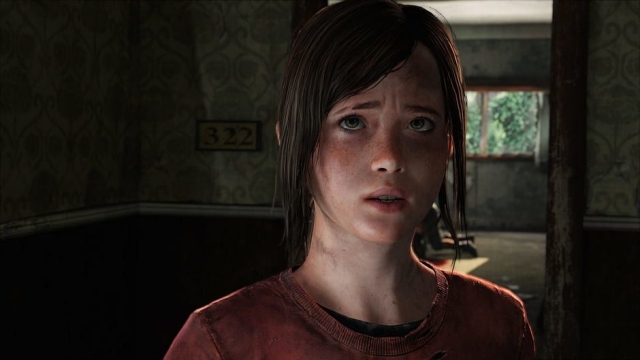
In stark contrast to just about everything Uncharted represented, The Last of Us was bleak, intense and forced players to wallow in the severity of the situations it presented — it was phenomenal. Combat was visceral and impactful; the environments and soundtrack oozed atmosphere; above all, the characters and their story did things to many players' emotions that no game had managed before. In the context of gaming becoming a widely accepted medium for real storytelling, The Last of Us had more impact than most games that preceded it, certainly any of Naughty Dog’s games. Obviously, I’m not claiming that it was the first or best “mature” story to be told in a game — far from it —, but Joel and Ellie’s odyssey opened up the public’s minds to the idea that videogames could be more than mindless distractions. For that, it earned near universal adoration and sold accordingly.
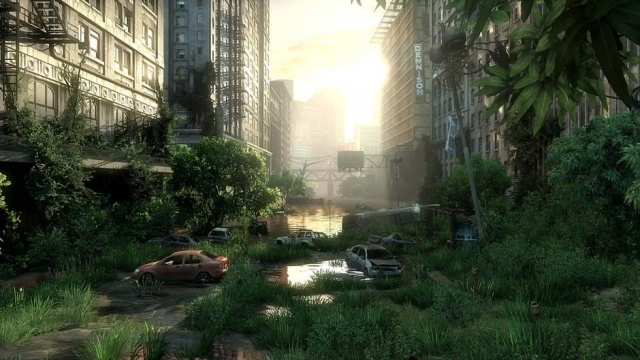
All Grown-Up
With the PlayStation 3 pulling in at its final stop, players found themselves crossing over to the latest hotness, this time: the sleek, sexy PlayStation 4. Naughty Dog fans were tided over with a remaster of The Last of Us in 2014, but it’d take a couple of years longer to see Naughty Dog’s real efforts on the latest Sony hardware come to fruition.
Work on Uncharted 4: A Thief’s End (2016), surprisingly, began all the way back in 2011. Amy Hennig and Justin Richmond — creative and writing leads for earlier Uncharted titles — got the production ball rolling before departing the company in 2014 and leaving directing responsibilities in the capable hands of Neil Druckmann and Bruce Straley, who — you might remember — filled the same role during The Last of Us’ production. The Last of Us broke new ground for Naughty Dog as a developer. If it was to revisit the world of Nathan Drake, it couldn’t ignore the ground covered since Uncharted 3 and make yet another rip-roaring, completely carefree thrill ride. Uncharted 4 struck the balance between light-hearted adventure and grounded, personal tale perfectly.
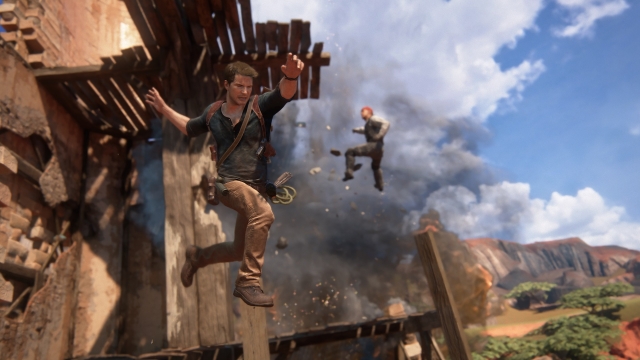
It’s almost a shame that this entry dialled down the amount of violence in favour of story and character building, because it was the most satisfying and well-crafted combat in the series to-date. Shooting finally felt punchy, open combat environments gave wider choice in confrontations, shoot-outs flowed fantastically and felt like scripted movie scenes, and verticality played a much larger role in combat. Despite these marked improvements, Naughty Dog showed restraint in keeping the waves of enemies noticeably lower than previous games, and it helped make each enemy encounter feel significant. Granted, you were still fighting a small army — literally — but it helped make the threat feel that bit more tangible and kept the focus on the main characters.
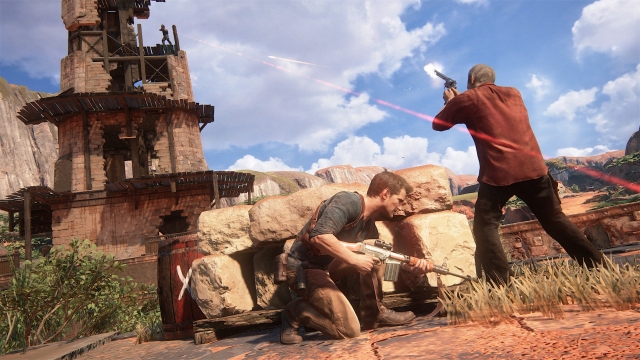
In a departure from series norms, this fourth entry forces the main cast to consider the consequences of their daring, treasure hunting lifestyle as they’re dragged into one final adventure. Nathan is somewhat older than his Drake’s Fortune days, the freewheeling life he used to lead — and is tempted back to — is shown to be at odds with the stable, law-abiding life he’s trying to make for himself. The story doesn’t forget the series’ swashbuckling roots, but it adds layers to the characters that give the story more meaning and lasting impact than anyone would rightly expect from an Uncharted game. By the end, it rounds off the entire franchise’s story in a fitting and oh-so satisfying conclusion that speaks volumes to how Naughty Dog has matured as a storyteller over the years.
Taking a Step Back
Right now in 2019, PlayStation owners are looking eagerly ahead to The Last of Us Part II, due out 29th May — following a delay. Until then, all we can do is look back and appreciate how far Naughty Dog has come in the 35 years since its inception as “JAM Studios” in that suburban basement. From simple skiing games for the Apple II, to heart-wrenching epics that push gaming forward as a medium, Jason Rubin and Andy Gavin could never have predicted what their teenage passion project would one day lead to. Even if they aren’t with the company any more, I doubt they could be prouder of what it has become.






COMMENTS